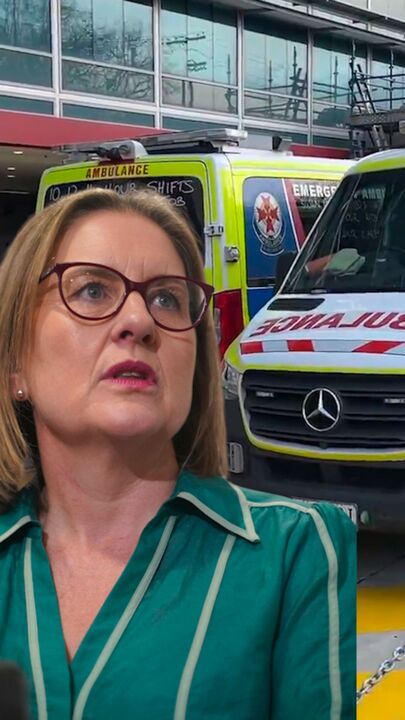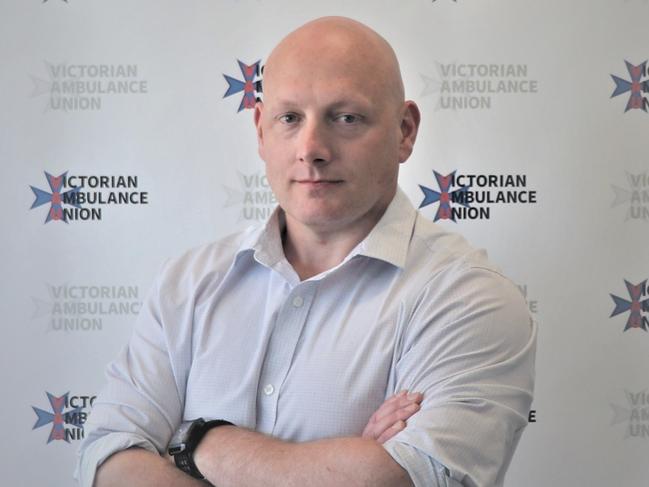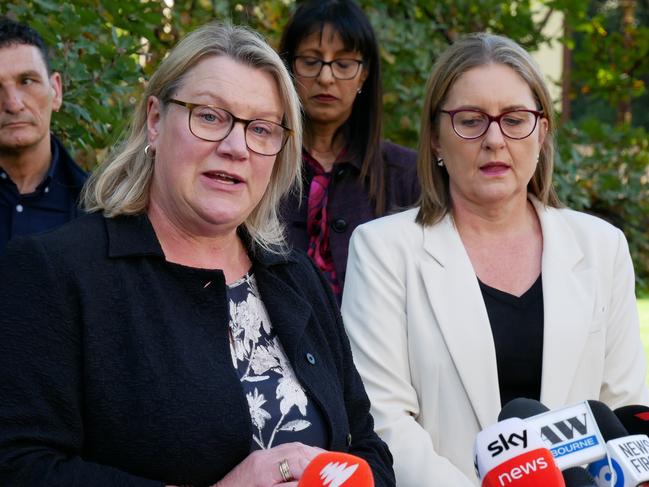New data shows Ambulance Victoria response times still too slow to help critically ill patients
Once again, a damning report has shown Ambulance Victoria is still missing the mark in responding to critically ill Victorians on time.

Victoria
Don't miss out on the headlines from Victoria. Followed categories will be added to My News.
Victorians still face delays for urgent ambulance call-outs, emergency department treatment and planned surgery after key waiting time benchmarks were again missed.
Ambulance Victoria again failed to meet agreed response times targets for critically ill patients with only two in three code one ambulances arriving on time.
Ambulances in Victoria are meant to reach 85 per cent of urgent “lights and sirens” cases within 15 minutes.
However, the latest Victorian Agency for Health Information data released on Wednesday showed just 65.4 per cent of patients received a response on time between July and September this year.
Hospitals struggled with delays over the same period, and emergency departments saw almost 498,000 patients – 25,000 more than the same time period year.

The Health Department said the data showed signs of ongoing post-pandemic recovery and response times were improving, with the surgical waitlist 10 per cent smaller year-on-year and emergency department patients seen seven minutes faster than the same quarter pre-pandemic.
But, even with improvements, treatments were still below crucial targets and 30 per cent of emergency department patients were not treated within the clinically recommended time.
A third of ambulance patients were ramped outside crowded emergency departments for more than 40 minutes.
More than 45 per cent of patients spent more than four hours in emergency, including the 55 per cent of adult mental health patients who waited more than eight hours in emergency for a mental health bed.
The number of patients stuck in emergency for more than 24 hours – typically an indicator of major bed shortages on the wards – was more than 3000, with an extra 944 patients delayed compared to the same period last year.
Planned surgery waitlists – while improving compared to previous quarters – still missed key targets, with the currently available data (information for multiple, major hospitals was unavailable) showing almost 30 per cent of semi-urgent patients were not treated in the recommended time. All urgent category one patients were treated in time.
Data on specialist clinic wait times was unavailable.

Victorian Ambulance Union General Secretary Danny Hill said the figures were not a surprise.
“Crews are either being sent to cases that don’t need an ambulance, or they are ramped at hospital for half their shift. Either way it means crews can’t respond to emergencies.
“Until that changes, we will never meet the response time target,” Mr Hill said.
“There were almost 100,000 lights and sirens cases in the last quarter. But our members are telling us that a lot of these cases are not emergencies at all. The call is often from a person who needs some form of assistance like a GP appointment, a social worker or aged care support, but certainly not an emergency ambulance.
“We desperately need call-taking accuracy. Paramedics are spending too much time responding to cases they shouldn’t be and that delays them responding to genuine emergency patients.”
AV’s metropolitan regional director Vanessa Gorman said: “We know there is more work to do. Ambulance Victoria continues to work with hospitals to transfer patients as quickly as possible and ensure all Victorians receive the right care at the right time,” she said.

The Health Department said emergency departments once again faced unprecedented demand and despite this, the median waiting time remained steady at 15 minutes and more than 50,300 patients underwent planned surgery.
Acting Health and Ambulance Services Minister Ingrid Stitt said: “Despite significant ongoing demand our hardworking doctors, nurses and ambos are making sure patients continue to get the care they need”.
In metropolitan Melbourne, paramedics attended 76.4 per cent of Code 1 patients within 15 minutes. The busiest LGAs with the highest percentage of total workload were Casey, Hume, Wyndham and Whittlesea.
Originally published as New data shows Ambulance Victoria response times still too slow to help critically ill patients



